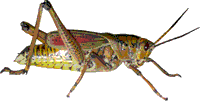Entomology Collections, Miscellaneous
Date of this Version
2013
Citation
Herzog SK, Hamel-Leigue AC, Larsen TH, Mann DJ, Soria-Auza RW, et al. (2013) Elevational Distribution and Conservation Biogeography of Phanaeine Dung Beetles (Coleoptera: Scarabaeinae) in Bolivia. PLoS ONE 8(5): e64963. doi:10.1371/journal.pone.0064963
Abstract
Insect macroecology and conservation biogeography studies are disproportionately scarce, especially in the Neotropics. Dung beetles are an ideal focal taxon for biodiversity research and conservation. Using distribution and body size data on the ecologically important Phanaeini, the best-known Neotropical dung beetle tribe, we determined elevational patterns of species richness, endemism, body size, and elevational range in Bolivia, specifically testing Bergmann’s and Rapoport’s rule. Richness of all 39 species and of 15 ecoregional endemics showed a hump-shaped pattern peaking at 400 m, but overall declined strongly with elevation up to 4000 m. The relationship between endemic and total species richness appeared to be curvilinear, providing only partial support for the null hypothesis that species-rich areas are more likely to be centers of endemism by chance alone. An elevational increase in the proportion of ecoregional endemics suggests that deterministic factors also appear to influence endemism in the Andes. When controlling for the effect of area using different species-area relationships, the statistically significant richness peak became more pronounced and shifted upslope to 750 m. Larger species did not have higher elevational mid-points, and mean body size decreased significantly with elevation, contradicting Bergmann’s rule. Rapoport’s rule was supported: species with higher elevational mid-points had broader elevational ranges, and mean elevational range increased significantly with elevation. The elevational decrease of phanaeine richness is in accordance with studies that demonstrated the combined influence of temperature and water availability on species diversity, but also is consistent with niche conservatism. For invertebrates, confirmation of Rapoport’s and refutation of Bergmann’s rule appear to be scale-invariant general patterns. Analyses of biogeographic patterns across elevational gradients can provide important insights for identifying conservation priorities. Phanaeines with narrow elevational ranges on isolated low-elevation mountains in eastern Bolivia are at greatest climate-change related extinction risk from range-shift gaps and mountaintop extinctions.


Comments
Copyright (c) 2013 Herzog et al. This is an open-access article distributed under the terms of the Creative Commons Attribution License